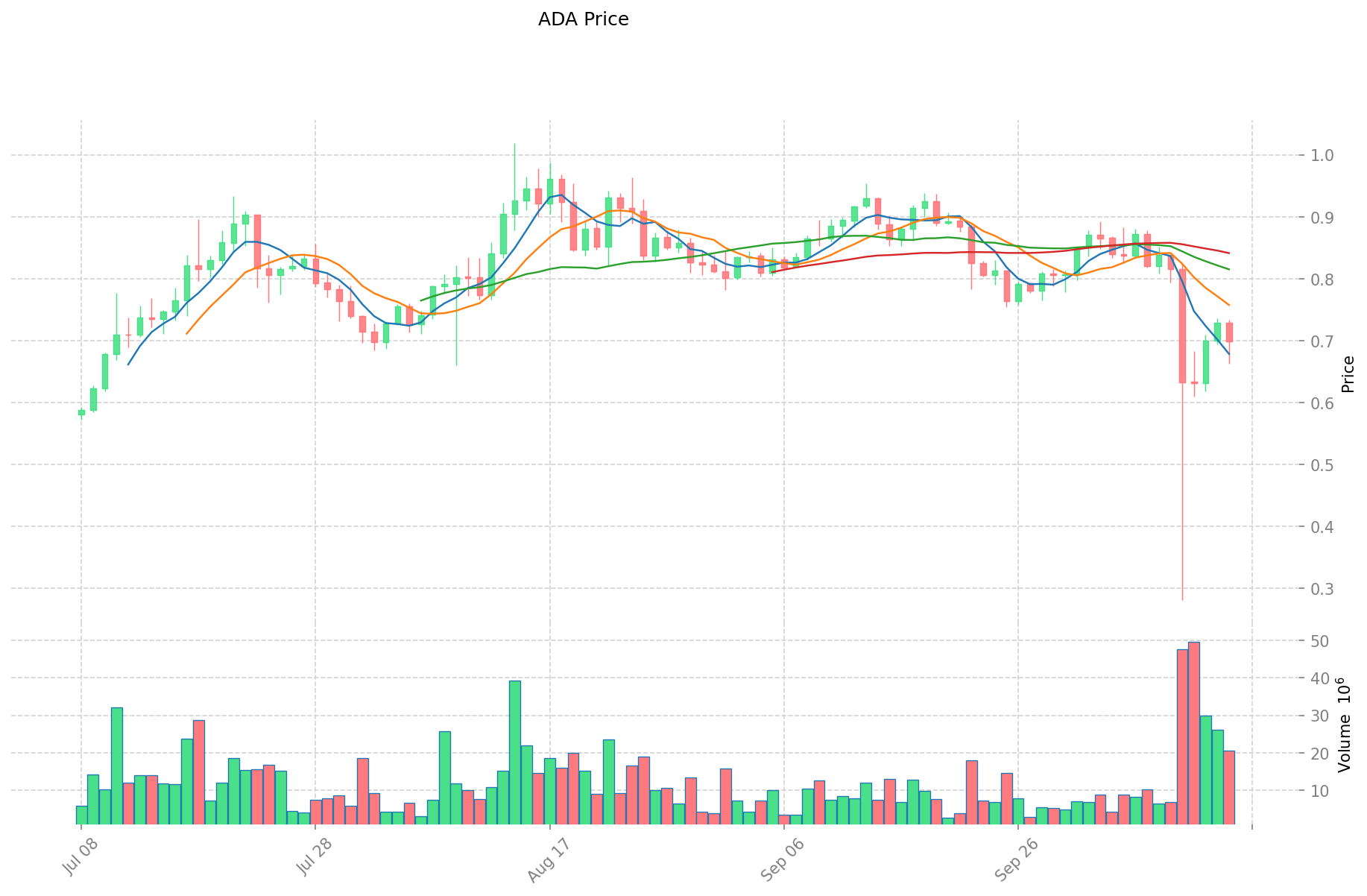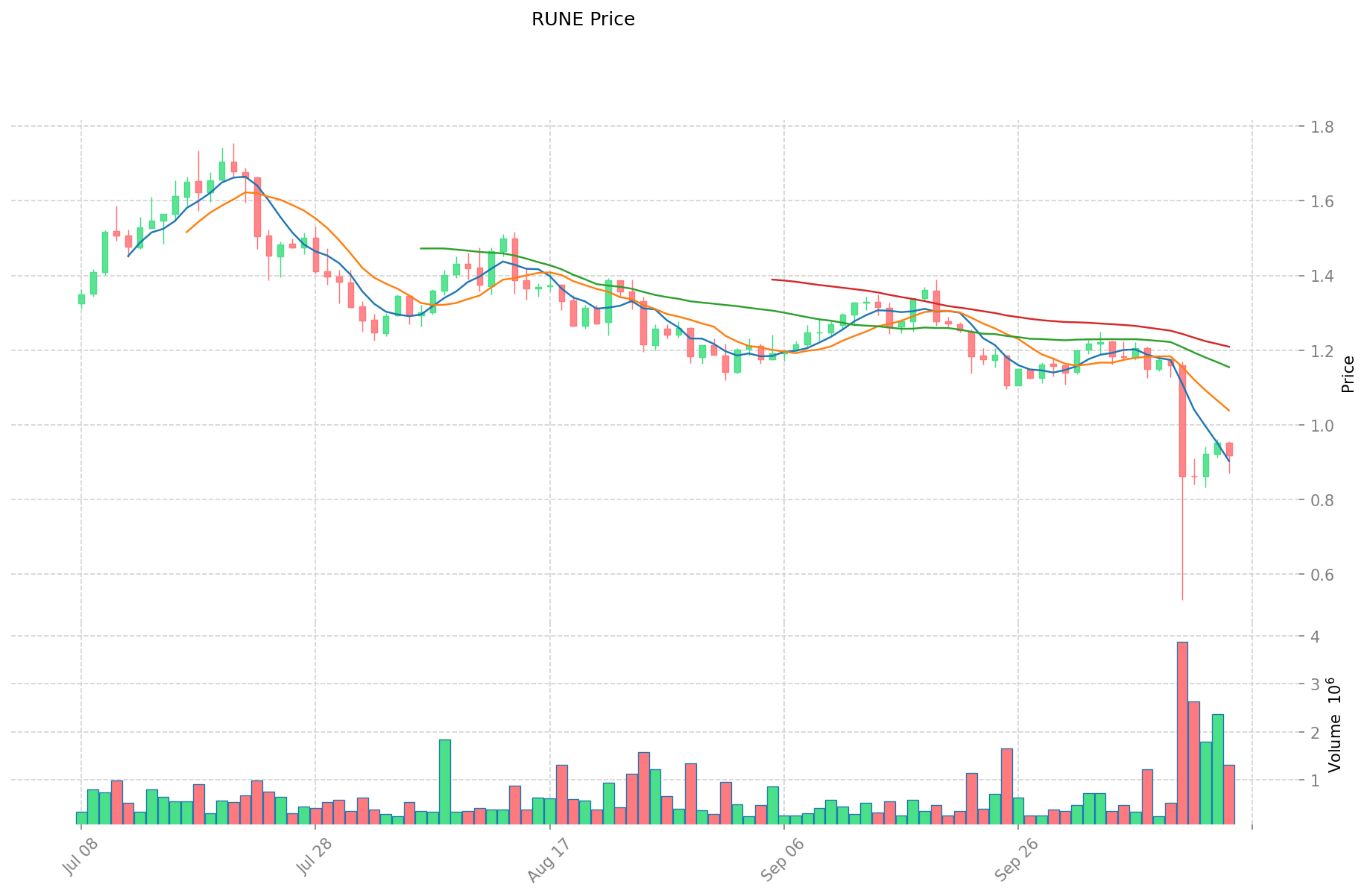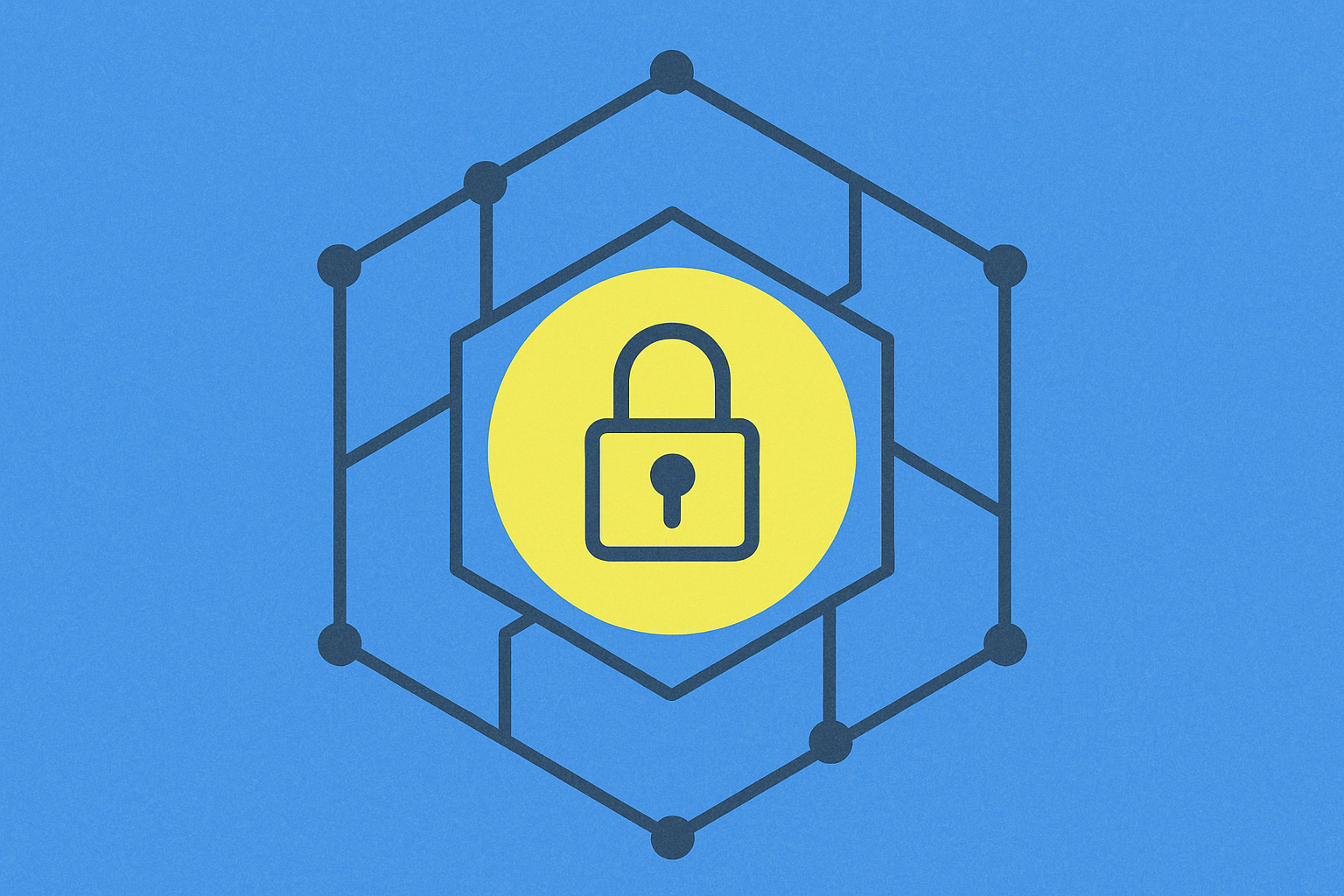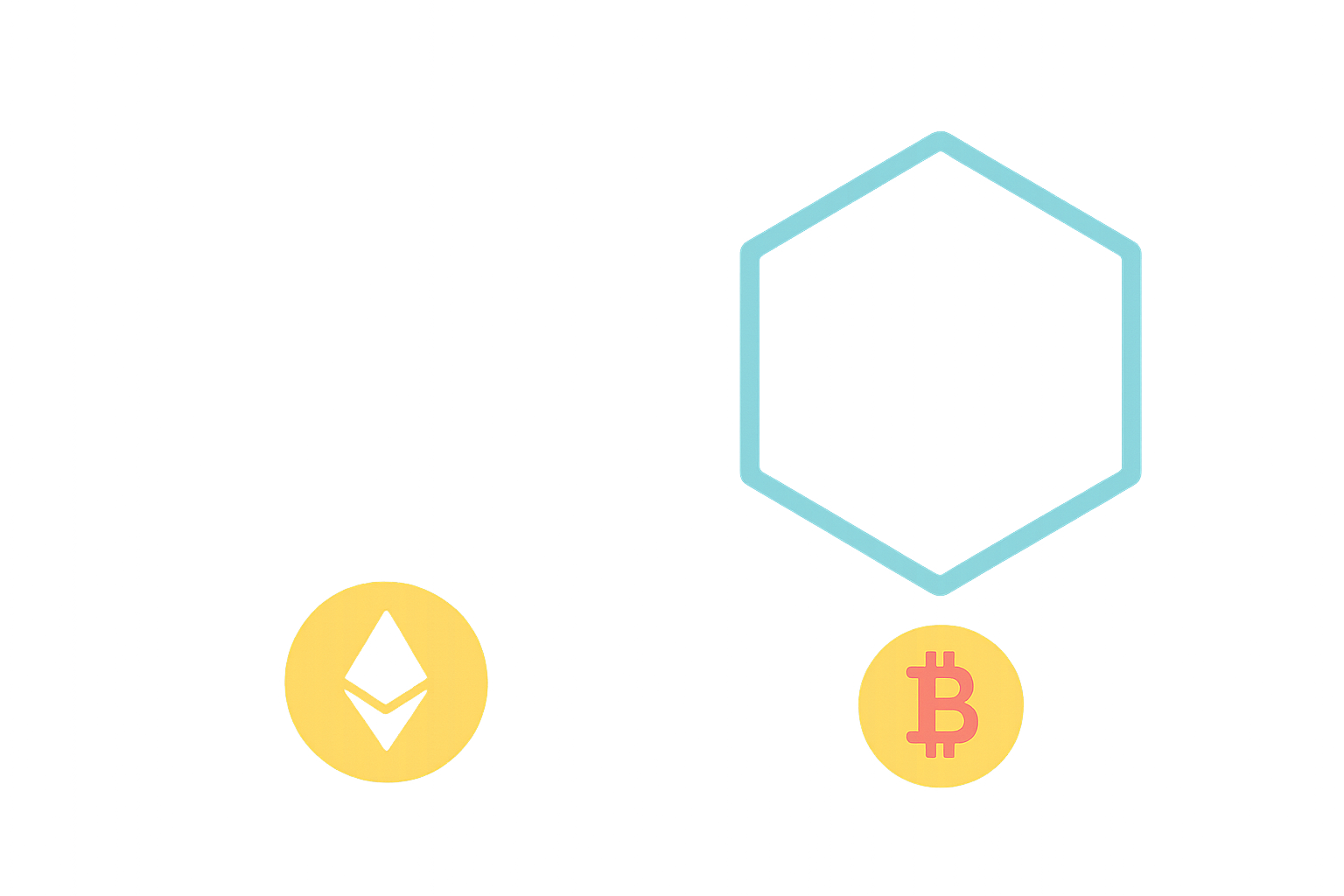ADA vs RUNE: Kripto Ekosisteminde Cardano ile THORChain’in Karşılaştırılması


Giriş: ADA ve RUNE Yatırımı Karşılaştırması
Kripto para piyasasında Cardano ve RUNE arasındaki karşılaştırma, yatırımcıların göz ardı edemeyeceği bir başlıktır. İki varlık; piyasa değeri sıralaması, kullanım alanları ve fiyat performansı bakımından farklılık gösterirken, kripto varlıkların konumlandırılması açısından da ayrı birer yaklaşımı temsil eder.
Cardano (ADA): 2017’de piyasaya sürülmesinden bu yana, katmanlı teknoloji altyapısı ve akademik araştırmaya, hakemli geliştirmeye odaklanmasıyla piyasa tarafından kabul görmüştür.
RUNE (RUNE): 2019’da piyasaya çıkan RUNE, zincirler arası likidite ve merkeziyetsiz borsa protokollerinin önde gelen isimlerinden biri olarak anılmaktadır.
Bu makalede, Cardano ile RUNE’un yatırım değerleri geçmiş fiyat eğilimleri, arz mekanizmaları, kurumsal adaptasyon, teknolojik ekosistemler ve gelecek öngörüleri başlıklarıyla kapsamlı biçimde karşılaştırılacak; yatırımcıların en çok merak ettiği şu soruya yanıt aranacaktır:
"Şu anda hangisi daha cazip bir yatırım?"
I. Fiyat Geçmişi Karşılaştırması ve Güncel Piyasa Durumu
ADA (Coin A) ve RUNE (Coin B) Fiyat Geçmişi
- 2021: ADA, akıllı sözleşme özelliğinin devreye alınmasıyla 3,09 $ ile tüm zamanların en yüksek seviyesine ulaştı.
- 2021: RUNE, zincirler arası likidite havuzlarının genişlemesiyle 20,87 $’a kadar yükseldi.
- Kıyaslama: 2022 ayı piyasasında ADA 3,09 $’dan 0,24 $’a, RUNE ise 20,87 $’dan yaklaşık 1 $’a düştü.
Güncel Piyasa Durumu (15 Ekim 2025)
- ADA anlık fiyatı: 0,6927 $
- RUNE anlık fiyatı: 0,9154 $
- 24 saatlik işlem hacmi: ADA 13.572.068 $ / RUNE 1.227.706 $
- Piyasa Duyarlılık Endeksi (Korku & Açgözlülük): 34 (Korku)
Anlık fiyatları görüntülemek için tıklayın:
- ADA güncel fiyatı için Piyasa Fiyatı
- RUNE güncel fiyatı için Piyasa Fiyatı
II. Proje Temelleri Karşılaştırması
Cardano (ADA)
Teknoloji ve Geliştirme
- Mutabakat mekanizması: Ouroboros Proof-of-Stake
- Son yükseltmeler: Ölçeklenebilirlik çözümleri ve akıllı sözleşme optimizasyonunda sürekli geliştirme
Ekosistem ve Benimseme
- dApp sayısı: DeFi, NFT ve oyun uygulamalarıyla büyüyen bir ekosistem
- Ortaklıklar: Blokzincir uygulamaları için kamu ve özel sektör iş birlikleri
Ekip ve Yönetişim
- Ethereum'un kurucu ortağı Charles Hoskinson liderliğinde
- Yönetişim: Catalyst ile merkeziyetsiz karar alma süreçlerine geçiş
THORChain (RUNE)
Teknoloji ve Geliştirme
- Mutabakat mekanizması: Tendermint tabanlı Proof-of-Stake
- Son güncellemeler: Zincirler arası varlık takası ve likidite sağlama konularında geliştirmeler
Ekosistem ve Benimseme
- Ana özellik: Zincirler arası likidite ve merkeziyetsiz borsa imkanı
- Entegrasyon: Varlık takası için çoklu blokzincir ağlarını destekler
Ekip ve Yönetişim
- Anonim geliştirme ekibi
- Yönetişim: Topluluk odaklı, THORChain Improvement Proposals (TIPs) ile
III. Yatırımda Dikkat Edilecekler
Güçlü Yönler
Cardano (ADA)
- Blokzincir geliştirmede akademik yaklaşım
- Özelliklerin planlı ve kademeli yayılımı
- Büyük ve aktif topluluk
THORChain (RUNE)
- Benzersiz zincirler arası likidite çözümü
- DeFi birlikte çalışabilirlikte büyüme potansiyeli
- Ağ kullanımına uygun tokenomik
Riskler
Cardano (ADA)
- Rakiplere göre yavaş geliştirme süreci
- Geliştirici ve proje çekmede zorluklar
THORChain (RUNE)
- Geçmiş ağ saldırıları nedeniyle güvenlik endişeleri
- Zincirler arası operasyonların karmaşıklığı
Piyasa Konumu ve Rekabet
- ADA piyasa değeriyle 12. sırada ve diğer akıllı sözleşme platformlarıyla yarışıyor
- RUNE, 216. sırada ve zincirler arası/DeFi protokolleriyle rekabette
IV. Gelecek Görünümü
Yaklaşan Gelişmeler
Cardano (ADA)
- Ölçeklenebilirlik ve birlikte çalışabilirlik alanında gelişimler
- Yönetişim mekanizmalarında ve topluluk katılımında artış
THORChain (RUNE)
- Zincirler arası kapasite ve desteklenen ağların güçlendirilmesi
- Protokol yönetişiminin daha da merkeziyetsizleştirilmesi
Olası Katalizörler
- Blokzincir teknolojisine kurumsal ilginin artması
- Büyük piyasalarda düzenleyici netlik
- Blokzincirler arası birlikte çalışabilirlikte ilerlemeler
V. Sonuç
Cardano ve THORChain, kripto para alanında kendilerine özgü değer önerileriyle öne çıkar. Cardano’nun planlı geliştirme yaklaşımı ve akademik altyapısı, THORChain’in zincirler arası likiditeye getirdiği çözümle tezat oluşturur. Dalgalı piyasa koşullarında yatırım kararı vermeden önce, yatırımcıların risk toleransını ölçmesi ve detaylı araştırma yapması gerekmektedir.


Yatırım Değeri Temel Unsurları: ADA ve RUNE
Arz Mekanizması Karşılaştırması (Tokenomik)
- ADA: 45 milyar token ile sabit maksimum arz, şeffaf ve kademeli dağıtım
- RUNE: THORChain ekosisteminde hem yardımcı hem yönetişim tokenı olarak çok amaçlı kullanım
- 📌 Tarihsel Eğilim: Her iki tokenın kontrollü arz mekanizması, enflasyonun yönetilmesine ve piyasa döngülerinde fiyat istikrarına katkı sağlar.
Kurumsal Benimseme ve Piyasa Kullanımları
- Kurumsal Portföy: ADA, köklü piyasa konumu sayesinde daha fazla kurumsal ilgi görüyor
- Kurumsal Kullanım: ADA, akıllı sözleşme alanında daha güçlü potansiyel sunarken; RUNE zincirler arası likiditeye odaklı
- Düzenleyici Tavır: Her ikisi de düzenleyici belirsizliklerle karşı karşıya; RWA entegrasyonu, geleneksel finans regülasyonuna tabi olabilir
Teknik Gelişim ve Ekosistem Genişlemesi
- ADA Teknik Güncellemeleri: Akıllı sözleşme özellikleri, ekosisteme geliştirici ve yatırımcı çekmeye devam ediyor
- RUNE Teknik Gelişimi: Zincirler arası birlikte çalışabilirlik ve yönetişim geliştirmeleri, şeffaflığı ve verimliliği artırıyor
- Ekosistem Kıyaslaması: ADA daha geniş bir ekosisteme sahipken, RUNE özellikle merkeziyetsiz zincirler arası likiditeye odaklanıyor
Makroekonomik Etmenler ve Piyasa Döngüleri
- Enflasyon Ortamında Performans: Her ikisi de enflasyon ortamında alternatif değer saklama aracı olarak konumlanıyor
- Makro Para Politikası: Her iki token, genel piyasa koşullarına ve faiz oranlarına duyarlı
- Jeopolitik Etmenler: Her iki ağın merkeziyetsiz yapısı, finansal istikrarsızlık ya da kısıtlayıcı politikalara sahip bölgelerde kullanıcılara cazip geliyor
III. 2025-2030 Fiyat Tahmini: ADA ve RUNE
Kısa Vadeli Tahmin (2025)
- ADA: Muhafazakâr 0,41586 $ - 0,6931 $ | İyimser 0,6931 $ - 0,977271 $
- RUNE: Muhafazakâr 0,704781 $ - 0,9153 $ | İyimser 0,9153 $ - 1,345491 $
Orta Vadeli Tahmin (2027)
- ADA, tahmini olarak 0,50937963645 $ - 1,1081241214 $ aralığında bir büyüme evresine girebilir
- RUNE, 0,696323628 $ - 1,3040242488 $ aralığında dalgalı bir döneme girebilir
- Temel etkenler: Kurumsal sermaye girişi, ETF, ekosistem gelişimi
Uzun Vadeli Tahmin (2030)
- ADA: Temel senaryo 1,0566857146034 $ - 1,341990857546318 $ | İyimser senaryo 1,341990857546318 $+
- RUNE: Temel senaryo 1,65981365512326 $ - 2,473122346133657 $ | İyimser senaryo 2,473122346133657 $+
Feragatname
ADA:
| Yıl | Tahmini En Yüksek Fiyat | Tahmini Ortalama Fiyat | Tahmini En Düşük Fiyat | Değişim Oranı |
|---|---|---|---|---|
| 2025 | 0,977271 | 0,6931 | 0,41586 | 0 |
| 2026 | 0,95211147 | 0,8351855 | 0,476055735 | 20 |
| 2027 | 1,1081241214 | 0,893648485 | 0,50937963645 | 28 |
| 2028 | 1,05093061836 | 1,0008863032 | 0,520460877664 | 44 |
| 2029 | 1,0874629684268 | 1,02590846078 | 0,5437314842134 | 48 |
| 2030 | 1,341990857546318 | 1,0566857146034 | 0,570610285885836 | 52 |
RUNE:
| Yıl | Tahmini En Yüksek Fiyat | Tahmini Ortalama Fiyat | Tahmini En Düşük Fiyat | Değişim Oranı |
|---|---|---|---|---|
| 2025 | 1,345491 | 0,9153 | 0,704781 | 0 |
| 2026 | 1,40169042 | 1,1303955 | 0,825188715 | 23 |
| 2027 | 1,3040242488 | 1,26604296 | 0,696323628 | 38 |
| 2028 | 1,760496038028 | 1,2850336044 | 1,105128899784 | 40 |
| 2029 | 1,79686248903252 | 1,522764821214 | 1,18775656054692 | 66 |
| 2030 | 2,473122346133657 | 1,65981365512326 | 0,946093783420258 | 81 |
IV. Yatırım Stratejisi Karşılaştırması: ADA ve RUNE
Uzun Vadeli ve Kısa Vadeli Yatırım Stratejileri
- ADA: Akıllı sözleşme platformları ve uzun vadeli ekosistem büyümesini hedefleyenler için uygundur
- RUNE: Zincirler arası likidite ve DeFi yeniliklerine ilgi duyan yatırımcılar için uygun bir tercihtir
Risk Yönetimi ve Varlık Dağılımı
- Temkinli yatırımcılar: ADA %70, RUNE %30
- Agresif yatırımcılar: ADA %50, RUNE %50
- Koruma araçları: Stablecoin dağılımı, opsiyonlar, çapraz döviz portföyleri
V. Potansiyel Risk Karşılaştırması
Piyasa Riski
- ADA: Genel kripto piyasası ve akıllı sözleşme platformlarıyla rekabetten etkilenir
- RUNE: DeFi piyasası volatilitesi ve zincirler arası likidite talebindeki dalgalanmalara açıktır
Teknik Risk
- ADA: Ölçeklenebilirlik sorunları, ağ yükseltmelerinde istikrar riski
- RUNE: Zincirler arası işlemlerde güvenlik açıkları, akıllı sözleşme istismar potansiyeli
Düzenleyici Risk
- Küresel düzenleyici politikalar her iki projeyi de etkileyebilir; ADA, daha büyük piyasa varlığı nedeniyle daha fazla incelemeye maruz kalabilir
VI. Sonuç: Hangisi Daha İyi Bir Alım?
📌 Yatırım Değeri Özeti:
- ADA avantajları: Akademik yaklaşım, geniş topluluk, kademeli özellik yayılımı
- RUNE avantajları: Benzersiz zincirler arası likidite çözümü, DeFi birlikte çalışabilirliğinde büyüme potansiyeli
✅ Yatırım Tavsiyesi:
- Yeni yatırımcılar: Düşük dalgalanma ve oturmuş piyasa pozisyonu nedeniyle portföyde ADA’ya ağırlık verebilir
- Deneyimli yatırımcılar: Hem ADA hem RUNE’a dengeli şekilde yatırım yapabilir
- Kurumsal yatırımcılar: ADA’ya yüksek piyasa değeri ve likiditesi nedeniyle odaklanırken, zincirler arası maruziyet için RUNE’u stratejik olarak ekleyebilir
⚠️ Risk Uyarısı: Kripto para piyasaları yüksek oranda dalgalıdır. Bu yazı yatırım tavsiyesi değildir. None
VII. SSS
S1: Cardano (ADA) ile THORChain (RUNE) arasındaki temel farklar nelerdir? C: Cardano, akademik araştırmaya ve planlı geliştirmeye odaklanan bir akıllı sözleşme platformudur. THORChain ise zincirler arası likidite ve merkeziyetsiz borsa protokollerinde uzmanlaşır. ADA’nın piyasa değeri ve ekosistemi daha geniştir, RUNE ise benzersiz zincirler arası işlevsellik sunar.
S2: Hangisi tarihsel olarak daha iyi performans gösterdi? C: İki coin de 2021’de zirveye çıktı; ADA 3,09 $’a, RUNE ise 20,87 $’a ulaştı. 2022 ayı piyasasında ise ADA 0,24 $’a, RUNE ise yaklaşık 1 $’a kadar düştü. 15 Ekim 2025 itibarıyla ADA 0,6927 $, RUNE ise 0,9154 $ seviyesindedir.
S3: Her projenin temel güçlü yönleri nedir? C: Cardano’nun avantajları; akademik yaklaşımı, planlı özellik yayılımı ve geniş topluluğudur. THORChain’in gücü ise zincirler arası likidite çözümü ve DeFi birlikte çalışabilirliğinde büyüme potansiyelidir.
S4: ADA ve RUNE yatırımlarında temel riskler neler? C: ADA’da risk, yavaş geliştirme hızı ve geliştirici çekmede zorluklardır. RUNE’da ise geçmiş ağ saldırıları nedeniyle güvenlik kaygıları ve zincirler arası işlemlerin karmaşıklığı öne çıkar. Her ikisi de piyasa dalgalanması ve düzenleyici risklere açıktır.
S5: ADA ve RUNE’un gelecek görünümü nasıl? C: ADA, ölçeklenebilirlik, birlikte çalışabilirlik ve yönetişim mekanizmalarının gelişimine odaklanıyor. RUNE, zincirler arası kapasitesini ve protokol yönetişimindeki merkeziyetsizliği artırıyor. İki projenin başarısı kurumsal benimseme ve düzenleyici netliğe bağlı.
S6: ADA ve RUNE için 2030 fiyat tahmini nedir? C: 2030’da ADA için temel senaryo 1,0566857146034 $ - 1,341990857546318 $ aralığındadır; iyimser senaryoda daha yüksek olabilir. RUNE’da ise temel aralık 1,65981365512326 $ - 2,473122346133657 $; iyimser senaryoda daha da yükselebilir.
S7: Farklı yatırımcı tipleri için hangi coin daha uygun? C: Yeni yatırımcılar, istikrarlı konum ve düşük volatilite nedeniyle ADA ağırlıklı bir portföyü düşünebilir. Deneyimli yatırımcılar, dengeli dağılım yapabilir. Kurumsal yatırımcılar, ADA’nın piyasa büyüklüğü ve likiditesi nedeniyle ağırlık verirken, zincirler arası maruziyet için stratejik olarak RUNE ekleyebilir.

INJ ve ADA: DeFi ve akıllı sözleşmeler alanında öne çıkan iki blockchain platformunun karşılaştırılması

RION vs ADA: Doğal Dil İşleme Alanında Yapay Zekâ Üstünlüğü Yarışı

KAR ve ADA: Akıllı Sözleşme Döneminde Kripto Para Üstünlüğü Yarışı

VELO ve ADA: DeFi Ekosisteminde İki Popüler Kripto Paranın Karşılaştırılması

HONEY vs ADA: Merkeziyetsiz finans arenasında kripto paraların tatlı rekabeti

Cardano (ADA) iyi bir yatırım mı?: Bu yükselen kripto paranın potansiyeli ve riskleri üzerine analiz

Dropee Günlük Kombinasyonu 11 Aralık 2025

Tomarket Günlük Kombinasyonu 11 Aralık 2025

Merkeziyetsiz Finans'ta Geçici Kayıp Nedir?

Kripto Parada Çifte Harcama: Önleme Stratejileri

Kripto Ticaretinde Wyckoff Yönteminin Anlaşılması





